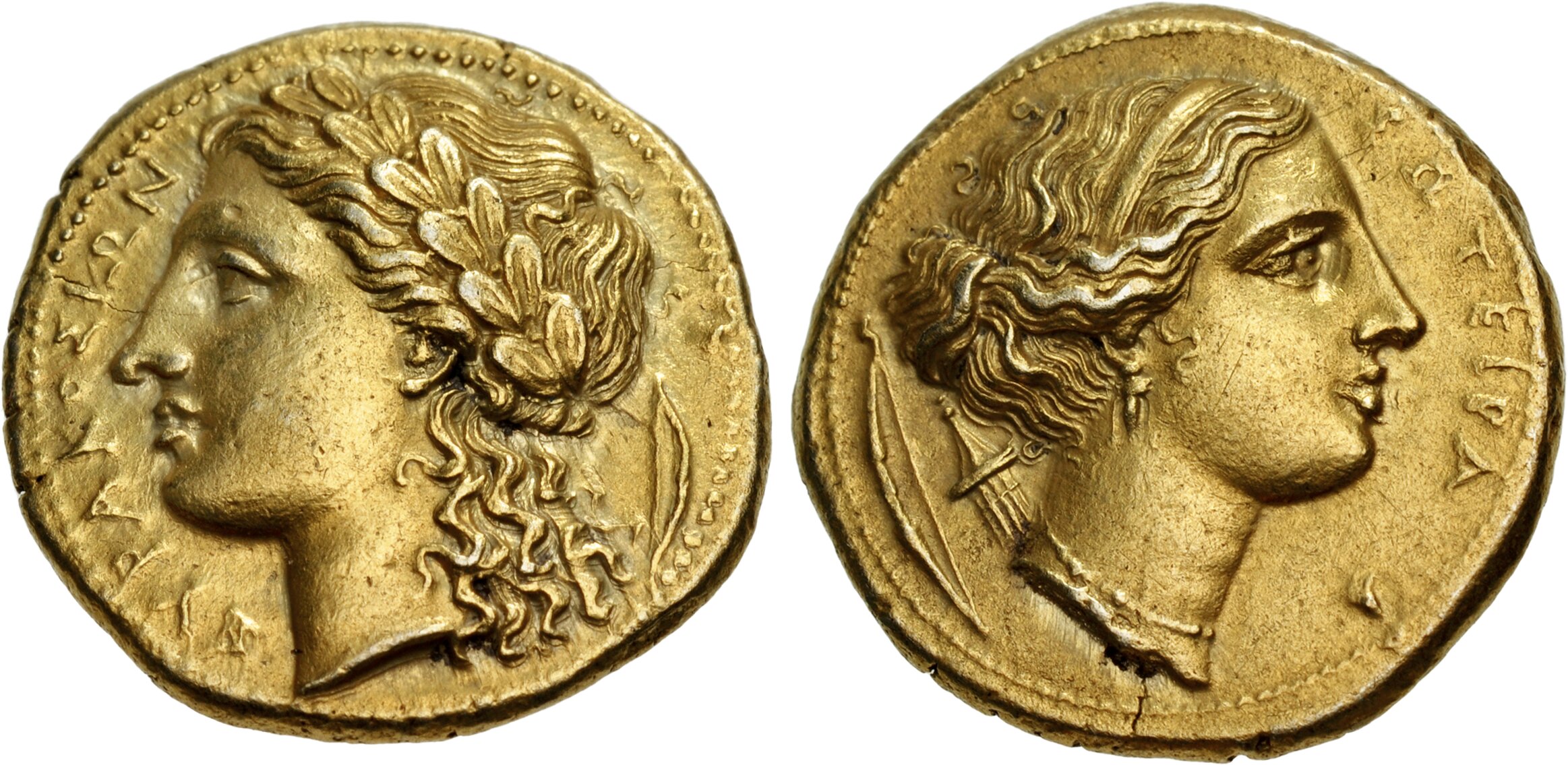Lorem ipsum dolor sit amet, consectetur adipiscing elit. Morbi eu nulla vehicula, sagittis tortor id, fermentum nunc. Donec gravida mi a condimentum rutrum. Praesent aliquet pellentesque nisi.


SICILY, Syracuse. Agathokles. 317-289 BC. EL 100 Litrai – Stater (18.5mm, 6.98 g, 9h). Struck circa 310-306/5 BC. Head of Apollo left, with long hair, wearing laurel wreath; ΣYPAKOΣIΩN to left, bow to right / Head of Artemis right, wearing taenia, triple-pendant earring, and pearl necklace; quiver over shoulder, bow to left, ΣΩTEIPA to right. Jenkins Group D, dies a/a; BAR Issue 13; HGC 2, 1293; SNG Lloyd 1433 (same dies); BMC 252 = GPCG pl. 26, 33 (same dies); Jameson 844 (same dies). Hairline flan crack. EF. Fine style. Well centered and struck.
Ex Classical Numismatic Group 108 (16 May 2018), lot 19; Palombo 12 (6 December 2013), lot 11.
During the course of Agathokles’ protracted struggle against Carthage, he launched a surprise invasion of Africa and struck terror in the heart of the Carthaginian heartland before the worsening situation in Sicily necessitated his return. It was likely in connection with the war against Carthage that a remarkable electrum coinage was produced by the Syracusan tyrant. Electrum was already established as the metal for the shekel-didrachms and fractional denominations of Carthage, and the production of his own currency in this metal would have facilitated Agathokles’ military activities in North Africa. The artistic style of this largest electrum denomination, valued at 100 litrai, is exceptional and truly in keeping with the great numismatic heritage of Syracuse. The coins make no reference to the tyrant himself and, indeed, due to their beautiful style, these issues have previously been attributed to much earlier periods in the 4th century. However, the present chronology, devised by G. K. Jenkins, seems reasonably secure and is supported by hoard evidence.